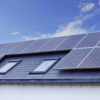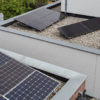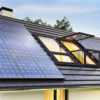Most people don’t think twice about paying their electricity bills. The bill comes by mail, email or as a message on your phone, you pay what’s due and that’s that. But power bills even before installing solar are often overlooked but become something of a curiosity when you go solar. Will you still get a bill? Will it be less than what you were paying? If so, by how much?
Unfortunately, in our experience, many people can end up with unrealistic expectations when it comes to solar power. They have been oversold on expectations and its too late to argue with a solar company once installation is complete and you have bill shock. They either expect their bills to drop drastically, if not disappear entirely. It’s important to look past the marketing hype and understand how billing actually works vis-a-vis solar power.
What’s Included in a Standard Electricity Bill
The electricity bill you receive from your energy retailer lists how much money you owe them for a period of use. A typical invoice will have:
- Your address.
- Your account number.
- Your meter number.
- Billing period (number of days).
- Meter reading for the billing period in kWh of electricity.
- The amount your retailer charges per kWh.
- Supply charges, which are usually fixed.
- Solar Meter Charge.
- Any charges or discounts you agreed to in your contract.
- Any taxes such as GST.
- The amount you owe the retailer after taking into account any credits, discounts or overdue charges from the previous month.
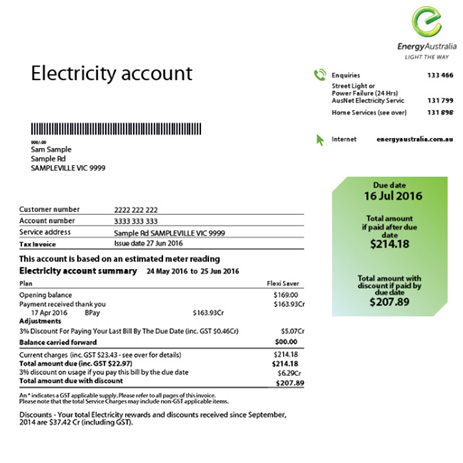
Different energy retailers may choose to omit certain details such as amount charged per kWh, cost of transportation etc. Most retailers also price their electricity at different rates based on available energy inventory, demand and supply.
How Does a Solar Installation Affect Your Electricity Bill
Most solar power systems are tied to the grid unless you’re living in a very remote area. Billing post solar installation continues to work just as it was prior to it with one further addition.
Grid-tied solar power systems work through a feed-in-tariff system where you can also sell your electricity to the grid. Your bill takes into account the difference between how much electricity you’re selling and how much you’re buying from the grid.
Even if you have opted for a solar power system that completely offsets your electricity usage, you will still get a bill from your utility. This is primarily because you still have to purchase electricity during nighttime and cloudy days when your system won’t be producing as much electricity as it can.
Here’s an example of an electricity bill after a solar installation:
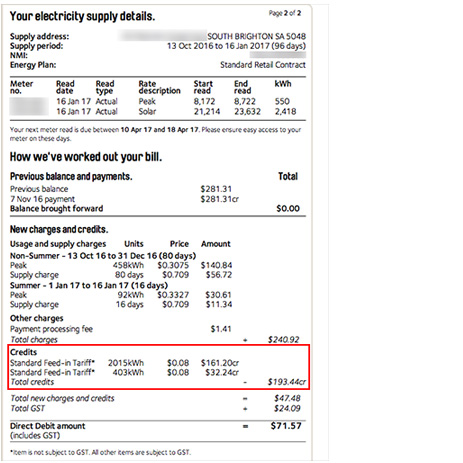
Note the Feed-in-Tariffs mentioned under the credit part of the bill that’s deducted from the total payable amount. This part is usually what confuses most people, too. Since the bill only shows the net savings after Feed-in-Tariffs, it’s easy to think that’s all the savings they’re going to get.
The credit from the utility is also much lower than what solar power companies advertise. It’s important to understand how to read your bill to get an accurate picture of your total earnings.
In the bill sample above, the savings for three months is $193.44. The resident will be saving around $775 per year at this rate. What the bill doesn’t show however is the amount of solar electricity that was consumed by the home during the same period of time.
The solar electricity you use is called offsetting as it is power you won’t be purchasing from the grid. The offset is how you earn most of your savings but is harder to ascertain unless you have a good understanding of your electricity consumption.
You can use a solar analytics system to keep track of how much electricity you are using vs how much you’re exporting to the grid. A solar analytics system can help you determine where you’re using most of your power, and how you can save more, and don’t be duped into thinking a rudimentary inverter app will provide you with detailed data.
Should You Use or Sell Most of Your Electricity?
It may seem logical to export as much electricity as possible to make a quick return on your investment. However, you need to take a few things into account.
Firstly, consider the Feed-in-Tariff rate your retailer is offering you. In some states like Queensland, NT and WA, single retailers have monopolies while in the rest, residents can pick and choose a retailer. If you live in a state with multiple retailers, then consider switching to a utility that offers the best combination of electricity price and Feed-in-Tariff rate.
Typically, the Feed-in-Tariff rates are always lower than the rate at which electricity is sold to a consumer. So, it makes sense to use as much solar power as possible to offset the high price of electricity you would have to pay to your energy retailer.
This doesn’t mean you should be leaving the lights and fans running as much as possible either. Rather, it’s best to size the solar power system correctly to your home’s energy usage pattern so that you can recoup your investment as quickly as possible.
Saving Electricity Starts with a Well-Thought-Out Solar Power System
As we said, you stand to recoup your investment faster by offsetting your grid purchase as much as possible. To do so, you need to have a good understanding of how much energy you currently require and may need in the future.
Since a larger system will cost more, while a smaller system might fall short, we can help you determine the right solar power system size to help you get the best results possible.
Feel free to check out how we design a solar system or get in touch with us if you have any questions.


